| The colours of Jupiter in 2021 (2) North-South scans of all bands by Christophe.P |
Here is the second part of my little study. Once the global albedo of the planet has been calculated, it is possible to exploit the values in different ways. One is to retrieve the photometric profile of Jupiter from one pole to the other, relevant because of the banding pattern, and scale it against the albedo value. The best way to do this would be to measure the profile at several longitudes, in order to average the local variations that still exist. However, for a given observer from an average observing site (me...) it can be difficult to obtain enough images to do so. In order to face this problem, it is possible however, to decide that a given face of the planet can be judged as "representative" of the global state of its atmosphere (especially, having the GRS at the central meridian is to be avoided!). Another way to deal with this is to retrieve the profile by "misusing" a software dedicated to spectroscopy. Such softwares can measure a wider range of longitudes and not a single line (see the figure attached). This will smooth a bit local variations. The profile is calibrated by finding the value of a given detail, such as the equatorial band, or any belt/zone. I will explain how I did that in the third message. Below are the figures. In 2021, the planet has experimented a very strong drop in albedo of the whole system I, with an especially dark equatorial "pseudo band". In comparison with a more "normal" whitish state, the drop in albedo in blue light represents around 3/4 points of albedo (from ~80% to ~45%) which looks quite a lot. In the meantime, the equatorial band reached a very high albedo value in the CH4 band, around 12% (starting from an albedo of 0,06 or 6%). This is a now identified correlation between extreme darkness in UV/bright CH4 value, that points at a particularily high structure. I also propose two coefficients of colors: 1) B minus Rc : this will measure how much light is absorbed when passing from red (a color where the albedo of the planet is more steady) to blue, the wavelength where the most profund variations of albedo are recorded. This is an index to evaluate the variations of colors of belt and zones from a period to another. 2) U divided by B: this tries to reveal special episodes of strong yellow/orange coloration. In the UV, such event will traduce themselves into a superior degree of absorption in comparison with the adjacent (and relatively close-looking) blue band. In 2021, the equatorial band, inside the EZ, shows this behavior. So would do the red spots sometimes (but this will be measured with another method). Here is a link to my EPSC poster abstract in Granada where you will find additionnal technical infos and references. On the third (and last) message, I will send results from photometric spectra of individual features.
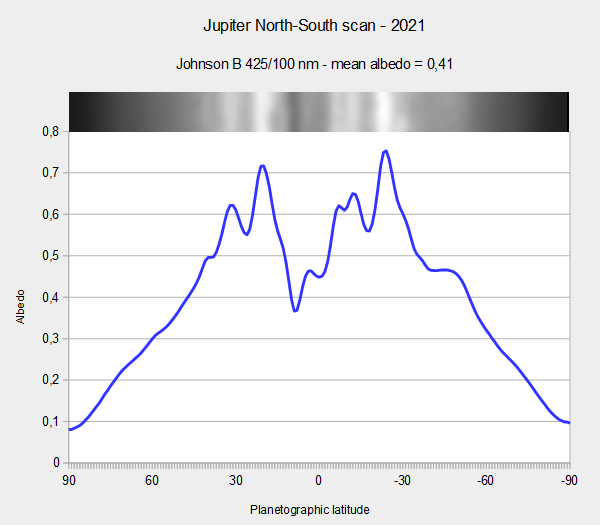


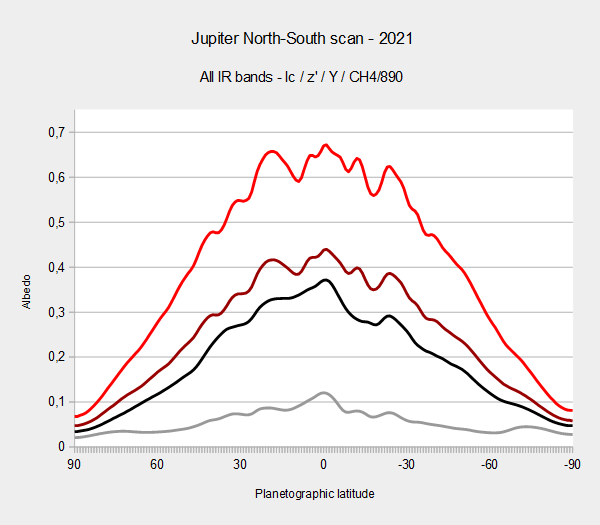

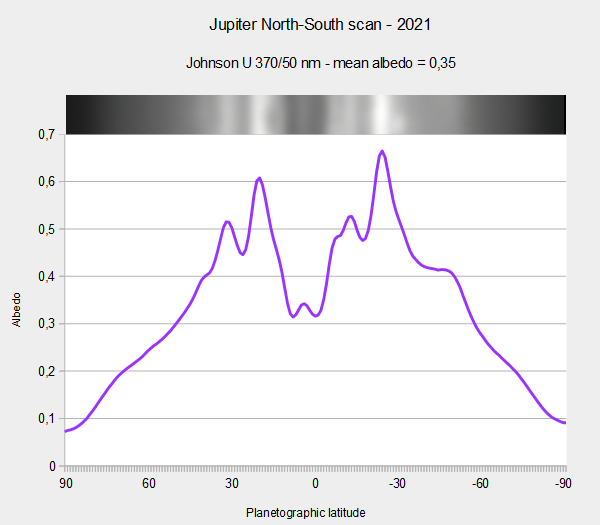
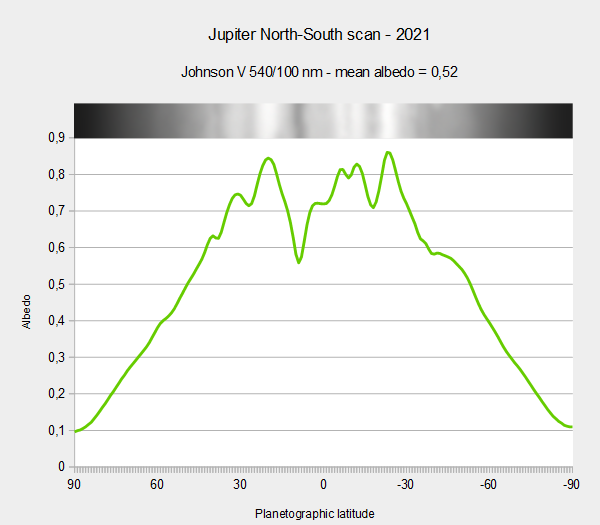

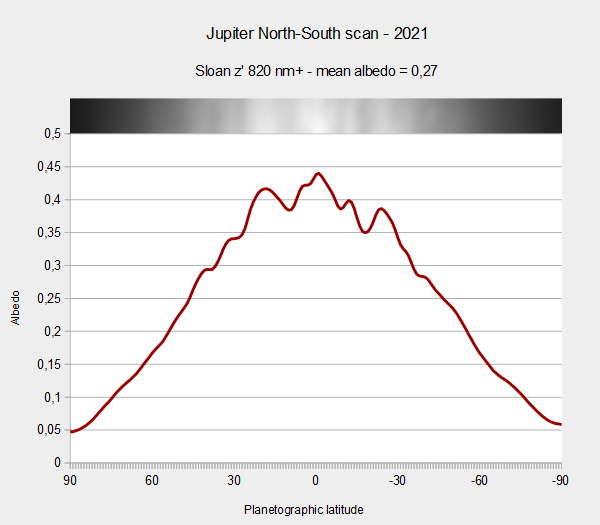
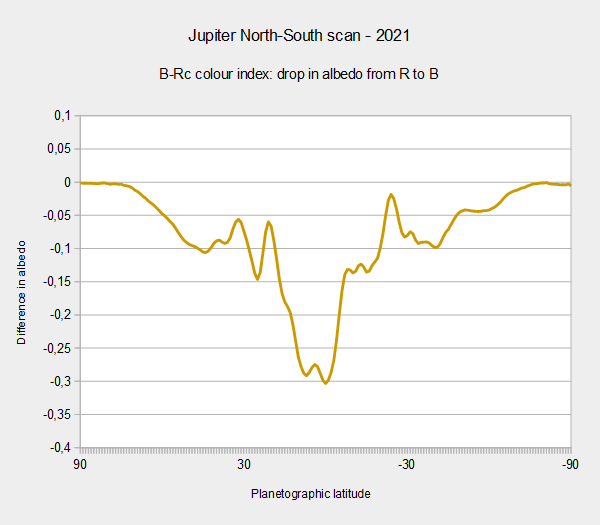

ALPO-Japan Latest
Jupiter Section